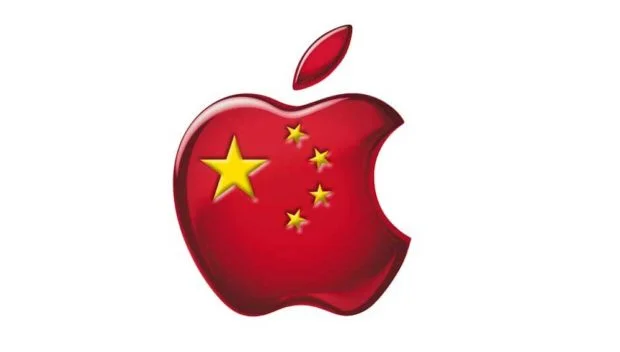A Multi-Faceted Look at Diamond Mining and Exposing the Truth About Synthetic Diamonds
With environmentalism becoming a forefront issue in American popular culture, many industries are embracing “greener” technology to try and maintain a customer base. The diamond market is no exception, and recent statistics show that lab-grown diamonds are now gaining attention in the media for being an alternative to natural diamonds. While the synthetic diamond industry is being hailed as a more socially responsible solution to diamond mining, the lack of transparency within the synthetic industry has proven to be problematic
An independent environmental consultant, Dr. April Hayward, is working with the Diamond Producers Association to help shed light on the diamond mining industry and the misconceptions that have been continually perpetuated by the media.
While speaking with Hayward by phone interview, she explained how misconceptions have hampered people’s overall views on natural diamond mining. “A lot of people have retained outdated perceptions about the diamond industry, specifically around whether or not diamonds are produced ethically,” Hayward stated.
Having been actively involved in the management of the design, execution, evaluation, and refinement of environmental mitigation and monitoring programs for diamond mines, she brings with her years of expertise on the environmental impact of diamond mining.
First, most people seem to assume that diamond mining creates a lot of pollution based on what they know or have heard about other industries. Hayward explained, “The reality is that diamond mining is actually very clean. For example, diamonds are extracted from the kimberlite rock that hosts them using just water, air, and x-ray technology. There are no harsh chemicals used to recover diamonds and on average, 83% of the water that is used is recycled.”
Diamond Foundry, which is backed by Hollywood star Leonardo DiCaprio, claims to be America’s number one man-made diamond producer.
When he’s not flying around the world on his private jet or lounging on his 213-foot yacht, DiCaprio is lecturing everyday people about their carbon footprints and investing in self-proclaimed “eco-friendly” companies.
“I’m proud to invest in Diamond Foundry Inc. – cultivating real diamonds in America without the human & environmental toll of mining,“ reads a quote from DiCaprio on Diamond Foundry’s website.
While Diamond Foundry and other synthetic diamond companies are touting their product as “eco-friendly,” the sheer facts of the matter show otherwise. Independent analysis from Trucost (part of S&P Global) found that synthetic diamond producers emit three times more CO2 than natural diamond mining. In fact, the Federal Trade Commission recently told lab-grown diamond companies to tread carefully. In a letter sent to eight different lab-grown companies, including Diamond Foundry, the FTC warned that these companies “must have a reasonable basis for any environmental benefit claims” made. Based on a review of publicly-available information, these companies have yet to offer proof of their claims thus far.
In order for consumers to make educated decisions, transparency from industries is key.
Hayward conveys that the diamond mining industry has become increasingly transparent, even hiring a third-party auditor to validate socioeconomic and environmental data, to ensure consumers have the information they need to make informed decisions. She also explained that through the Kimberley Process (KP), which unites governments, industry, and civil society in reducing the flow of conflict diamonds (rough diamonds used to finance wars against governments), 99.8% of diamonds are now certified conflict-free.
In 2019, the Diamond Producers Association (DPA) published the Total Clarity report which combined the collective socio-economic and environmental footprint of DPA Members into one single document in order to show the reality of diamond mining today.
Hayward has not been able to find a single corporate social responsibility (CSR) report on any of the synthetic diamond manufacturers’ websites. The lack of transparency from synthetic diamond producers has been an inhibitor to investigating their environmental claims, and leaves customers without the information they need to make an informed decision on their purchases.
In terms of sustainability, it’s more than just environmental footprint, but rather how the lives of individual people are affected.
Hayward explained that despite popular belief, diamond mining is very safe, with 44 times fewer health and safety incidents occurring in large-scale diamond mining than in construction and engineering. Over the last 15 years, the diamond industry has been a frontrunner when it comes to industry self-regulation, and is committed to addressing any future issues that may arise.
DPA members, on average, pay their employees 66% more than the average wage. Also, DPA members pay about $3 billion dollars annually in taxes and other revenues that go to local governments and communities.
As an example, there has been a positive development in Botswana since large-scale diamond mining began around 50 years ago. “Over that time, poverty has been cut in half. They went from having six kilometers of paved roads to over 7,000 kilometers of paved roads. There are more than 300 secondary schools where all children are provided free primary and secondary education to the age of 14,” Hayward explained.
“It’s been shown time and again that when people have the means to take care of themselves, they will take care of the environment. These are real-life benefits that help local communities and, ultimately support sustainable development.”
On the other hand, Diamond Foundry, whose synthetic diamond lab is extremely power-intensive, is set on only bringing between 35 and 50 jobs to the state of Washington, where its new plant is located.
In today’s world, people can be susceptible to “headlines” mentality and, in an effort to back supposed environmental causes, be deceived into thinking that they are doing the right thing by embracing synthetic rather than natural products. It is for this reason that facts must be researched and made readily available. While the media is swift to push the agendas of corporations that self-identify as “eco-friendly,” the natural diamond industry shows that transparency can be key in combating misconceptions about sustainability.





Great article. As a start-up diamond cutting & polishing company operating in the world-renowned diamond city “Kimberley”, in South Africa.
I would love to share more light on how natural diamonds continue to bring a positive impact on their surrounding communities.